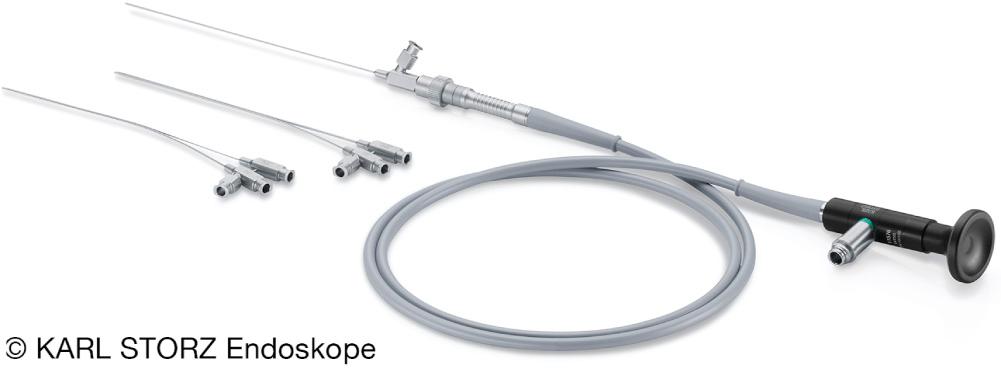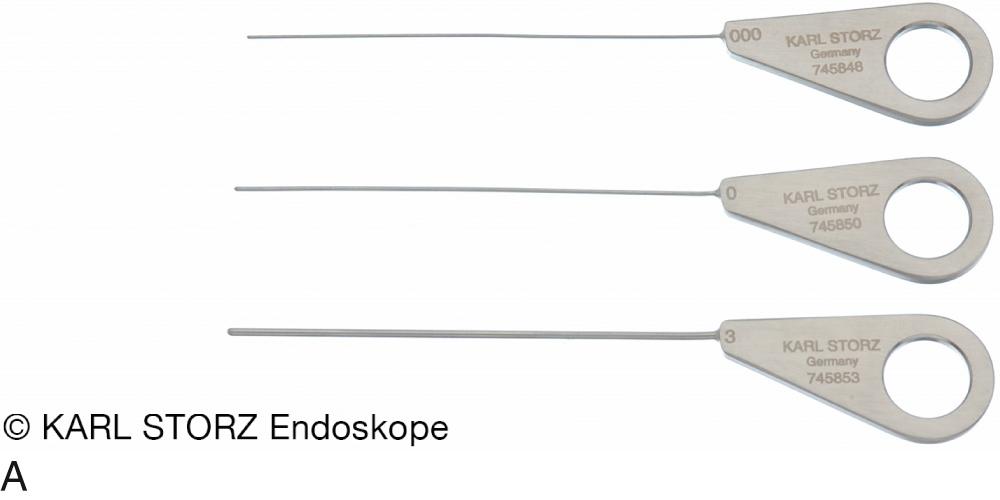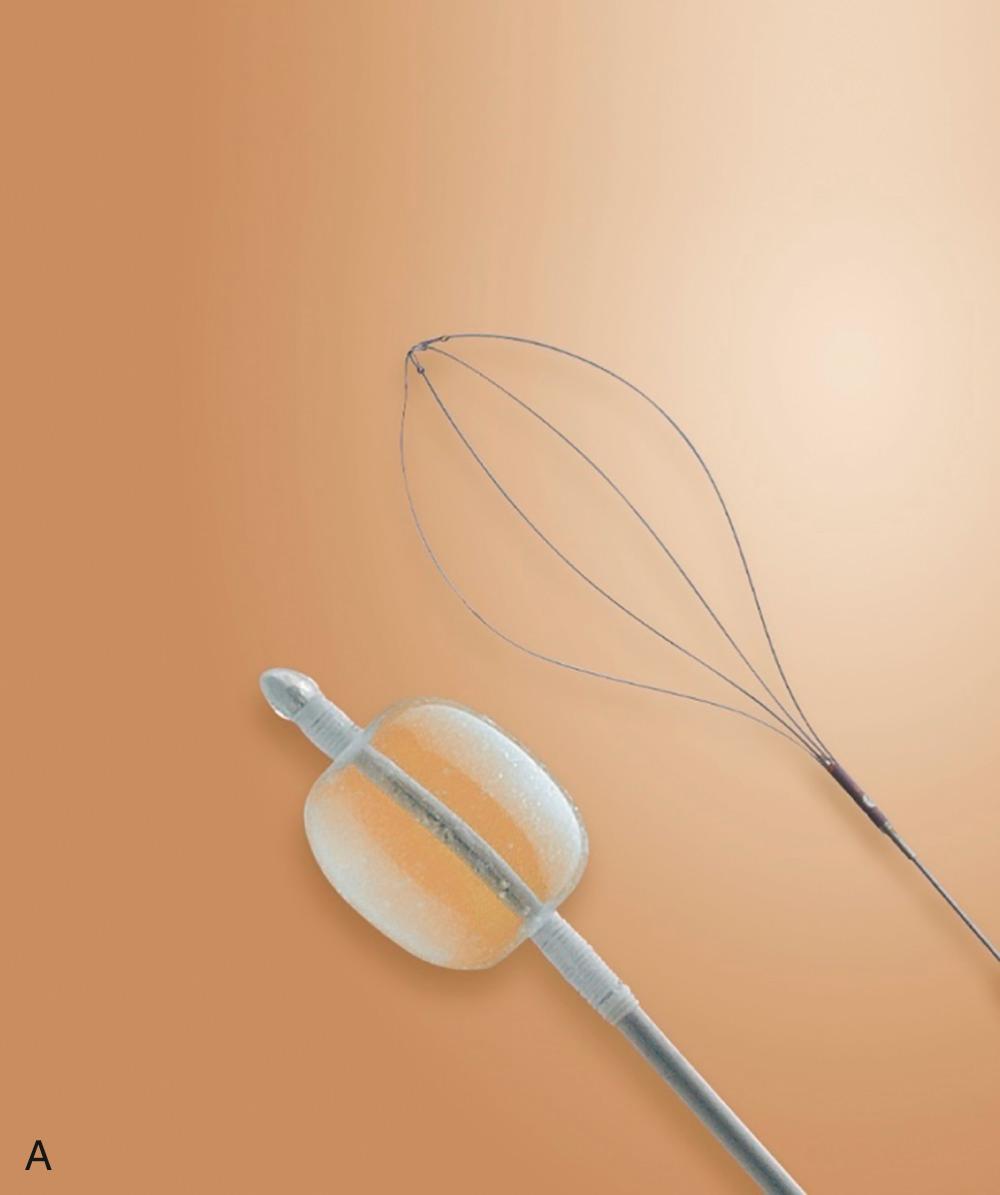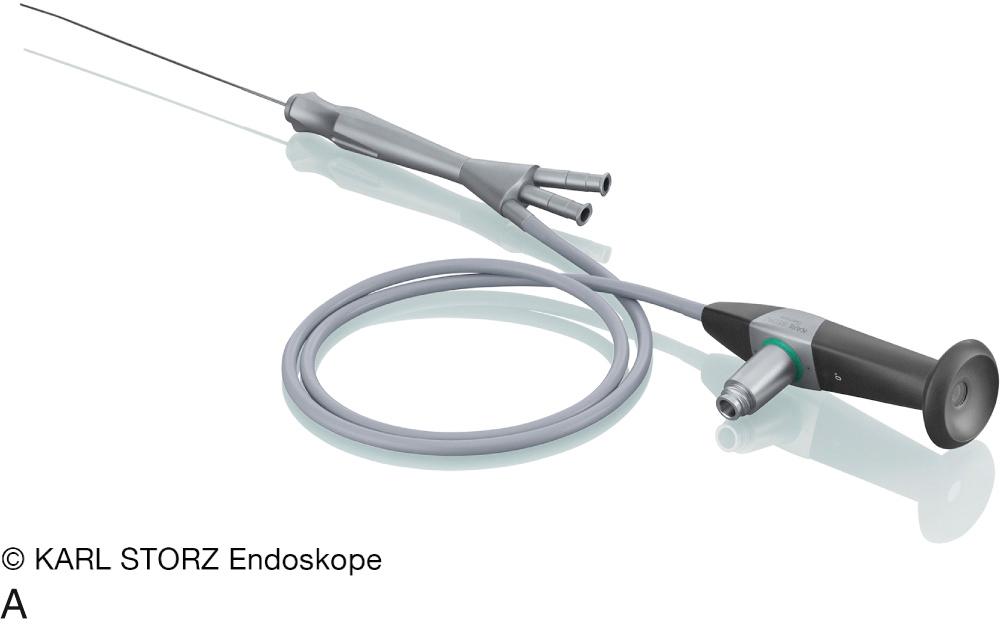Physical Address
304 North Cardinal St.
Dorchester Center, MA 02124
The size of the papilla and the difficulty to pass the papilla without traumatizing it
The caliber of the ducts
The diameter of the scope
The quality of the scope (number of pixels)
The limitations of maneuvering the scope in the ductal system due to the anatomy (sharp angles) and to the scope (bendable or not)
The correct visibility in the ductal system (that depends both on the rinsing system and on the tightness of the papilla) as the duct is naturally collapsed, similar to the esophagus.
The history of sialendoscopes and sialendoscopy has been closely related to these facts.
Gundlach and colleagues, in 1990, developed the first flexible scope of 2.2 mm that had a fixed angled tip enabling 12 laser lithotripsy cases. The length and fragility of the scope hampered its development.
Katz, in 1991, performed the first stone extraction via a basket next to a nude optic fiber of 0.5 mm. The poor vision, the lack of rinsing, and inability to direct both the basket and optic fiber hampered its development.
Nahlieli and colleagues, in 1994, used a rigid optic fiber of 2.7 mm and baskets adjacent to the fiber on eight cases. There was a lack of a rinsing system and working channel, and this imposed a systematic marsupialization.
We started using a 1.6 mm flexible endoscope (mobile tip) with a working channel for rinsing and inserting baskets in 1995 . Although it was the first scope with both a rinsing and working channel, its fragility made its development impossible.
In 1997, Nahlieli and Baruchin started developing an interventional “sialendoscope” based on two tubes of 1.3 mm with a large handle and rinsing system . Its diameter corresponded to the diameter of the ducts (Zenk et al.), and length limited its use.
Our development of a specific “modular sialendoscope” occurred also in 1997. A line of diagnostic and interventional sheaths is adapted to thin optic fibers of 0.75 mm with working channels (WC) of 0.65 and 1.15 mm. A similar line for 1 mm optic fibers, with similar WC, a rinsing system around the optic fiber, and a beveled tip allowed progressive dilatation of the papilla ( Fig. 14.1.1 ). The fibers are semiflexible, and they can follow any curve that has been previously applied to the sheaths, in order to explore sharp angled bifurcations. The first 100 cases were published in the New England Journal of Medicine (NEJM) in 1999.

The noninvasive passage of the papilla being the limiting factor, we developed specific instruments to dilate the papilla atraumatically. We focused starting in 2001, teaching the technique in our European Sialendoscopy Training Center. The importance of papilla dilators, conic dilators, hollow dilators introduced over guidewires, as well as scissors and grasping and biopsy forceps (all instruments that were developed in collaboration with the Karl Storz Co., Tuttlingen, Germany) enabled a reproducible technique ( Fig. 14.1.2 ).

Regarding disposables, as there were no small diameter baskets and balloons, we developed baskets of three, four, and six wires (0.6 and 0.4 mm diameter) with and without tip as well as balloons (0.7 and 0.9 mm) microburrs and guidewires (0.38, 0.4, and 0.6 mm) fitting our sialendoscopes ( Fig. 14.1.3 ), and looked for laser fibers of similar sizes, enabling endoscopic controlled intraductal lithotripsy of stones.

Later in 1999, the Karl Storz Co. produced what we named the “all-in-one scopes,” including optics and light, rinsing channels (RC), and WC in a single tube. To be able to treat children and small ducts, as well as adults, we requested several diameters: 0.89 mm (WC or RC 0.25); 1.1 mm (WC 0.45, RC 0.25); 1.3 mm (WC 0.65, RC 0.25); and 1.6 mm (WC 0.8, RC 0.25).
All the scopes have markings for each centimeter and a bent tip of 5°, as we have noticed that exploration of the ductal system requires a rigid bend of the tip of the scope ( Fig. 14.1.4 ). Both systems, for 20 years, have been used to treat patients with salivary stones and strictures.

Nahlieli and Baruchin later developed the same principle of a straight “sialoscope,” with disposable sheaths and a flexible optic fiber. In 2004, the Erlangen group using also a similar sialoscope published their first 24 sialendoscopy cases. In 2007, the Karl Storz Co. developed, with the Erlangen group, similar sialendoscopes to our “all-in-one” scopes (0.89 mm, 1.1 mm, 1.6 mm) with a different material, nitinol, allowing total flexibility of the scope but no definite bending of its tip.
Having used both systems for almost 20 years, the modular scope system appears, in our opinion, to be slightly less fragile, with a superior image quality due to an increase in pixels for an identical size. It is also more efficient to explore the entire ductal system due to the customizable bending of its tip and to dilate strictures with the beveled tip. This customization is impossible with “all-in-one scopes”: Marchal models do have a fixed angle of 5°, which facilitates exploration but is not bendable, and the Erlangen scopes do not have a bent tip, as it is flexible but not bendable.
It is important to say that all the scopes existing on the market (at time of writing) are extremely fragile. The fragility is not only linked with the tip of the endoscope but also with the cable, that contains the optic fibers and the light fibers. The sterilization process is one of the keys to its duration.
Become a Clinical Tree membership for Full access and enjoy Unlimited articles
If you are a member. Log in here